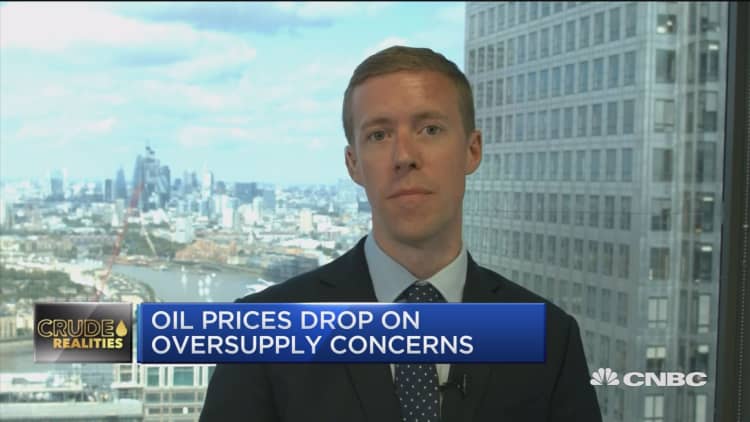Oil prices fell on Wednesday as a surprise increase in U.S. crude stockpiles and growing OPEC production fed worries that global supplies could swell, while investors continued to worry that trade tensions could hit energy demand.
U.S. crude ended the session down $1.10, or 1.6 percent, at $67.66, adding to the previous day's 2 percent loss. Brent crude, the global benchmark, dropped $1.87, or 2.5 percent, to $72.34 a barrel by 2:26 p.m. ET.
U.S. commercial crude inventories rose by 3.8 million barrels in the week through July 27, the government's Energy Information Administration reported. Analysts had expected a decrease of 2.8 million barrels.
The jump in the nation's crude stocks was largely due to a buildup in inventories in the Gulf Coast, as shipments from the export hub fell 50 percent from the previous week. The increase could prove temporary.

"The Gulf Coast is getting ready to reload for the next tranche of exports, and the inventories will decline over the next couple of weeks," Andrew Lipow, president of Lipow Oil Associates told CNBC.
The report also showed gasoline stocks fell by 2.5 million barrels, compared with analysts' expectations in a Reuters poll for a 1.3 million-barrel drop. Distillate stockpiles, which include diesel and heating oil, rose by 3 million barrels, versus expectations for a 264,000-barrel increase, the EIA data showed.
"The refinery run rate is sky high. Gasoline demand is sky high. It's a much more supportive report than it appears on its face," John Kilduff, founding partner at energy hedge fund Again Capital, told CNBC.
Oil prices are also being pressured by concern that global trade tensions could crimp economic growth.
"Ratcheting up of trade tensions between the U.S. and China has brought oil prices under significant selling pressure," said Abhishek Kumar, senior energy analyst at Interfax Energy. "Market participants are awaiting additional tariffs by the U.S. on the next tranche of imported goods from China."
Last month, Brent fell more than 6 percent and U.S. crude slumped about 7 percent, the biggest monthly declines for both benchmarks since July 2016.

On Wednesday, a Kuwaiti official said the country increased production in July by 100,000 bpd from June's average.
On Monday, a Reuters survey found that OPEC production reached a 2018 high in July. The Organization of the Petroleum Exporting Countries, plus Russia and other allies, decided in June to ease supply cuts in place since 2017.
"Strong upticks from key OPEC members in July helped push group production up significantly versus June," analysts at JBC Energy said in a report.
Oil prices also were pressured by signs that a supply disruption in the Bab al-Mandeb Strait in the Red Sea could be resolved
Yemen's Houthi group said it was ready to halt attacks in the Red Sea to support peace efforts. Saudi Arabia had suspended oil shipments through the strait last week after attacks on tankers.
— CNBC's Tom DiChristopher contributed to this report.

